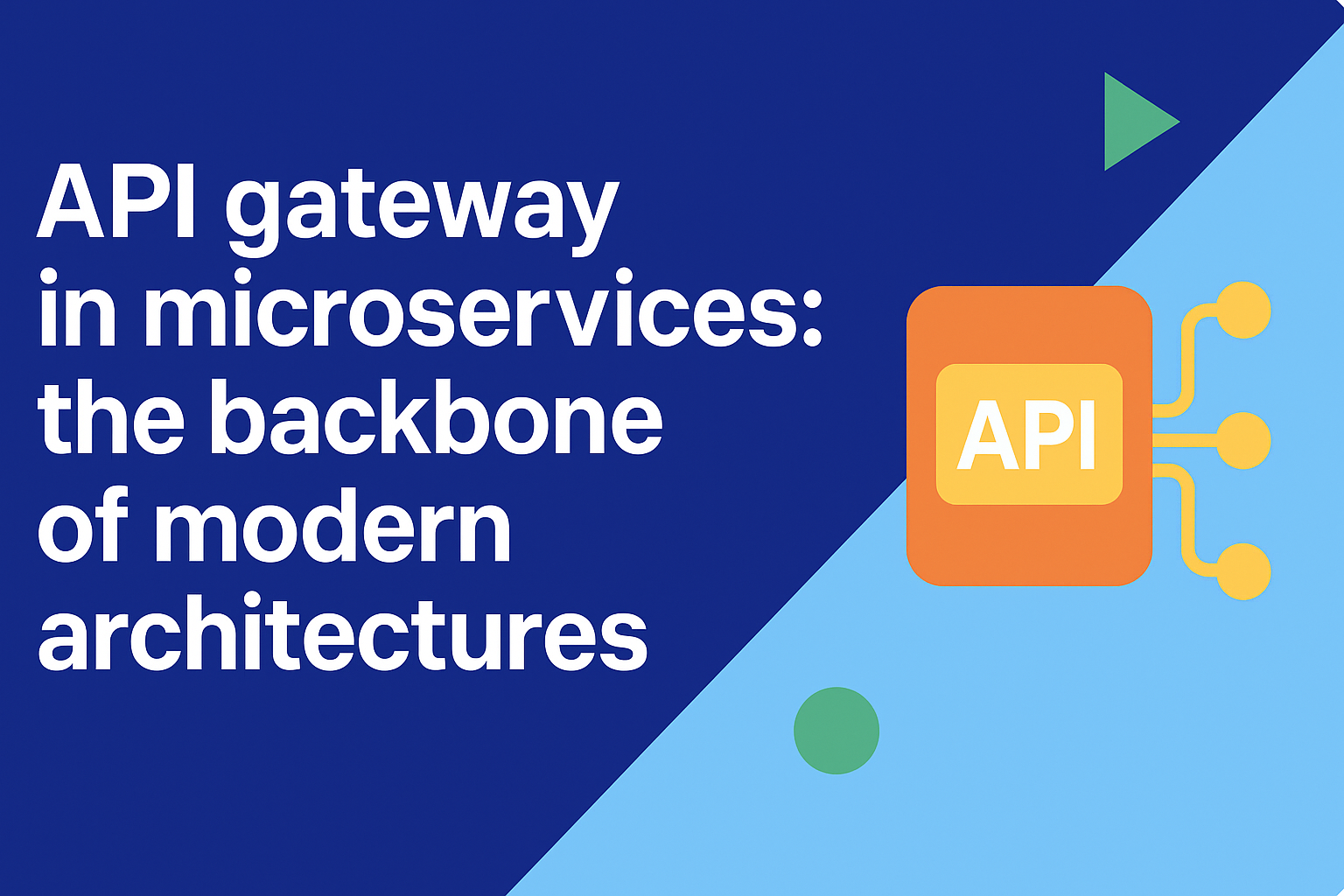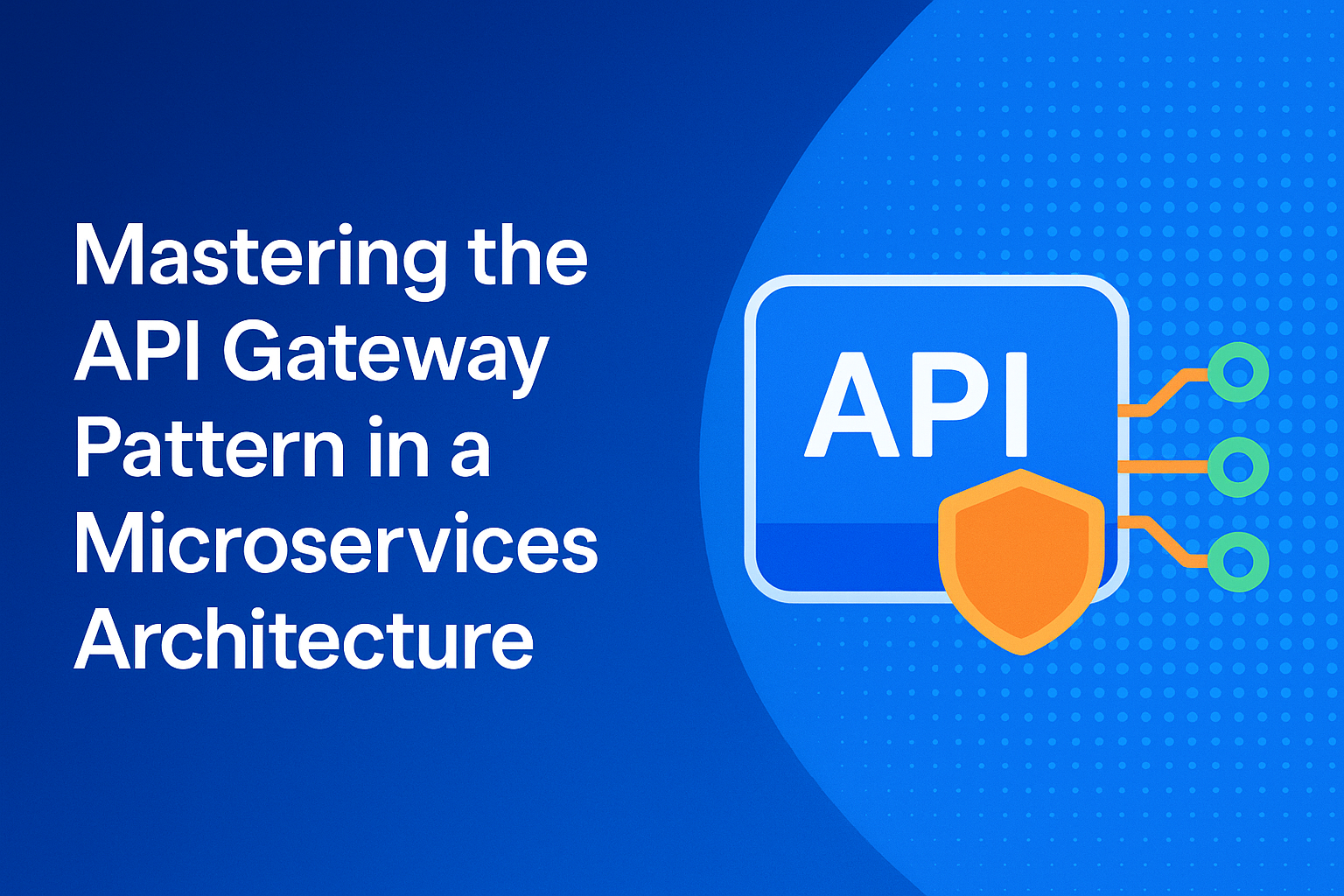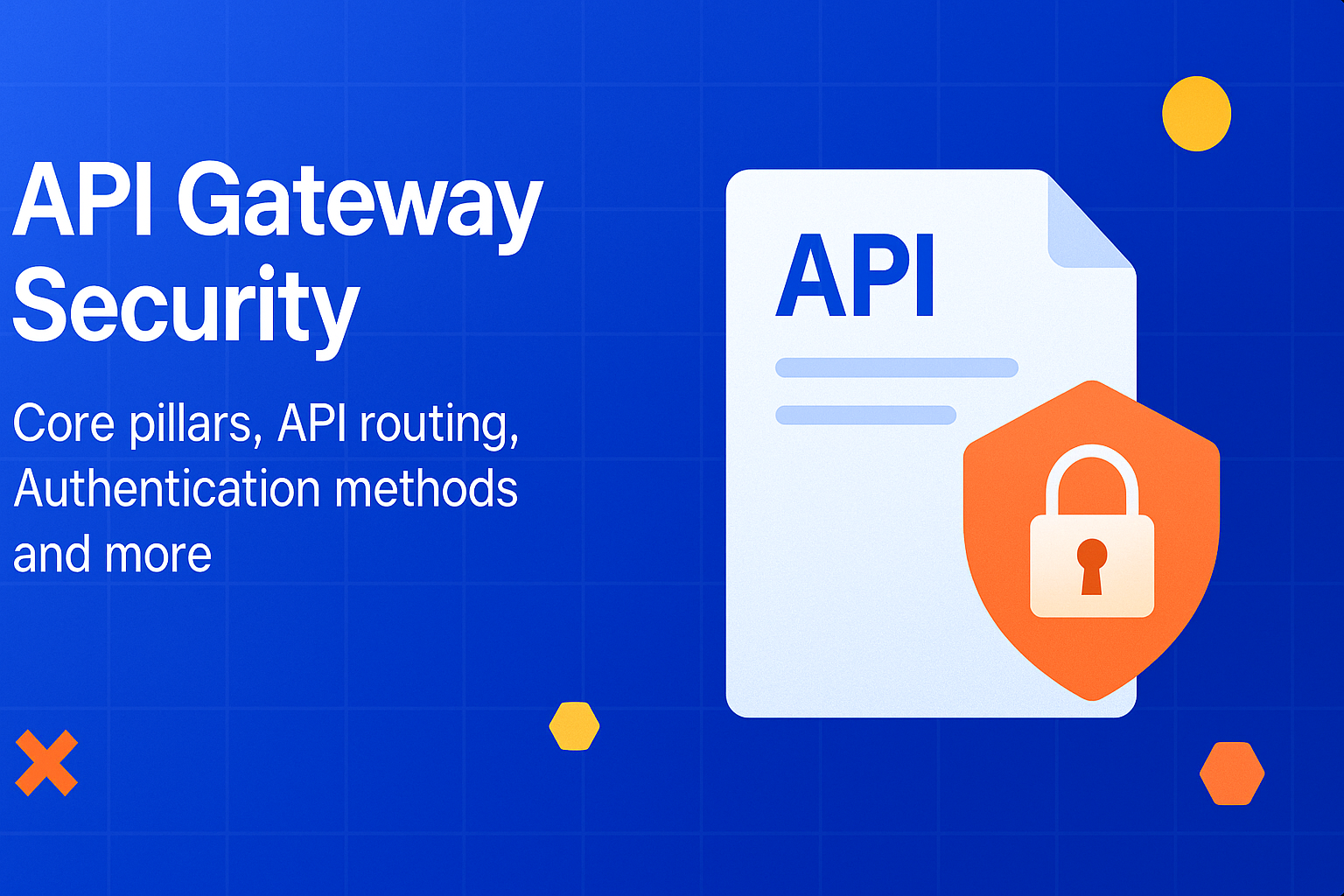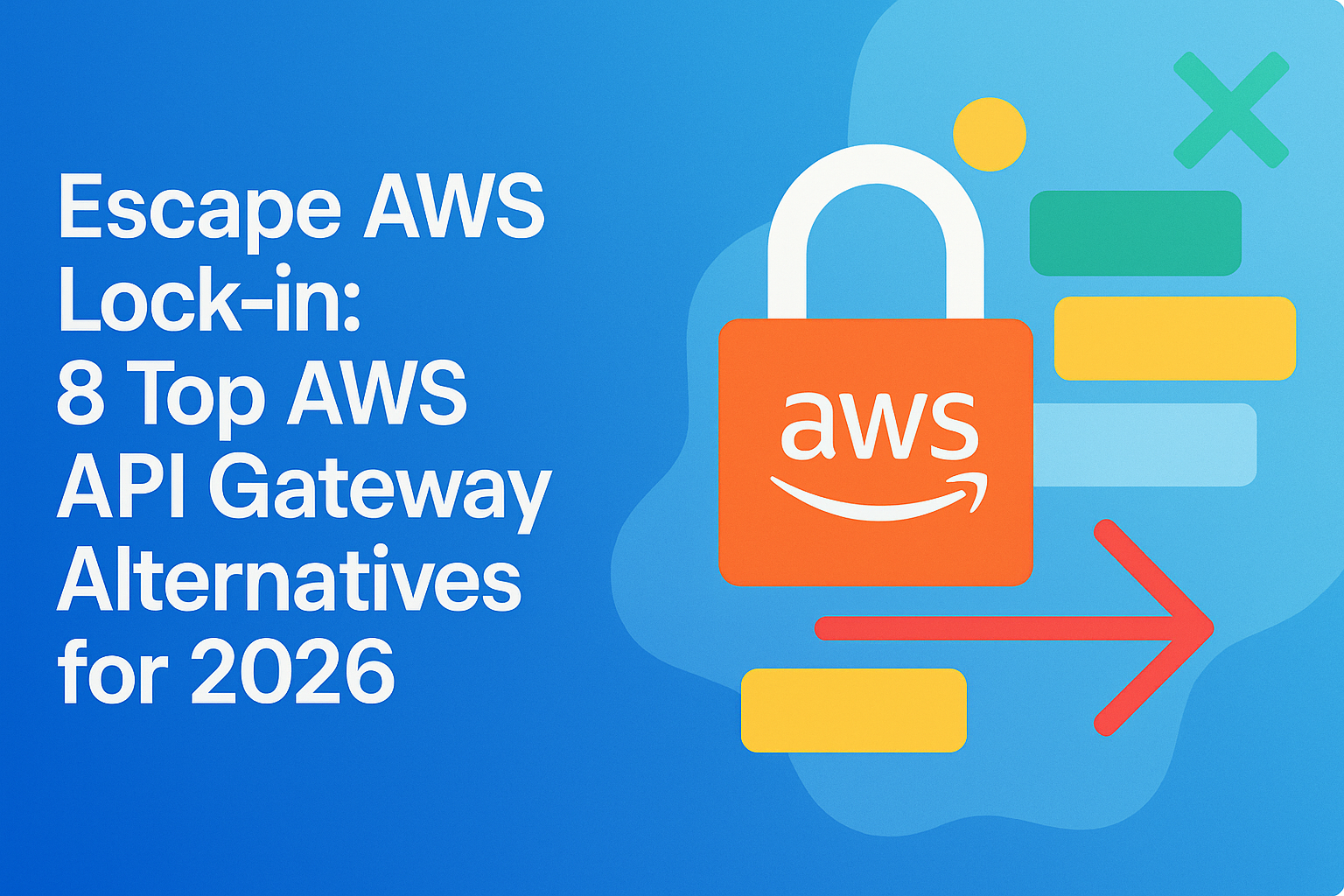
Moving from a monolith to microservices reveals a new problem. Distributed systems are complex. Each service handles one function, but connecting hundreds of them securely and quickly is a major challenge. This fragmentation leads to chaos if unmanaged.
An API Gateway solves this. It acts as a single entry point for all client requests, from mobile apps to web browsers. Clients talk to the gateway, not to every single service. The gateway handles routing, authentication, and rate limiting. This abstraction stops teams from rebuilding the same controls for every service. Without a gateway, the system becomes messy, insecure, and hard to monitor.
The gateway is more than a simple proxy. It's the essential control layer for managing traffic and keeping the architecture secure.
How an API gateway fits into a microservices architecture
Every microservice exposes its own API. This modularity, part of an "API-first" design, creates a complex web of endpoints. For a client application, managing direct access to all these services is a nightmare. It causes several major problems.
- Too many endpoints: The client must know the address of every service, creating fragile, tight coupling.
- Confusing version control: Clients must track different versions for different endpoints, creating a dependency mess.
- Inconsistent security: If each service handles security, gaps appear. One service might use OAuth2, another an API key.
- Performance bottlenecks: A single user action could require multiple client-to-service round trips, slowing the app.
An API Gateway sits at the front of the network as a facade.

All client requests pass through it. The gateway's central position allows it to handle shared functions consistently.
- Authentication & Authorization: Acts as the central guard. It validates API keys, tokens (like JWTs), or other credentials, ensuring every request is from a known source. It then checks if that source has permission for the specific action.
- Rate Limiting & Throttling: Prevents any single client from overwhelming a service. By enforcing quotas (e.g., 100 requests per minute), it ensures service stability and fair usage, protecting against both DDoS attacks and buggy code.
- Load Balancing: Distributes incoming requests efficiently across multiple healthy instances of a service. This prevents any single server from becoming a bottleneck and improves fault tolerance, as traffic is automatically routed away from failed instances.
- Caching: Stores copies of common, non-dynamic responses (like a product catalog or user profile). By serving data from its cache, the gateway reduces calls to backend services, dramatically lowering latency for the end-user.
- Observability: Gathers logs, metrics, and distributed traces from all requests in one place. This unified view is critical for monitoring system health and rapidly debugging issues across multiple services.
This setup decouples clients from services. Developer teams can focus on building features, not on redundant infrastructure code.
API gateway vs. service mesh
People often confuse API Gateways with Service Mesh tools like Istio and Linkerd. A Service Mesh manages east-west traffic: the internal communication between microservices. It handles service discovery, mutual TLS, and circuit breaking.
An API Gateway handles north-south traffic: the requests coming from external clients into the services. It is the public-facing front door, focused on security, rate limiting, and transforming requests.
The API Gateway remains essential, even when a service mesh is in use.
- Single entry point: Provides a stable, unchanging URL (facade) for all clients. Even if backend services are refactored or moved, the client application is unaffected because it only calls the gateway's address.
- Tighter security: The gateway acts as a security checkpoint, enforcing authentication (like OAuth2 or JWT) for every request. This creates a hardened perimeter, ensuring no unverified traffic ever reaches the internal microservices.
- Consistent governance: All APIs can have uniform policies for versioning, logging, and data transformation applied at one central point. This makes it simple to publish a unified developer portal and enforce standards.
- Better performance: By caching frequently accessed data, the gateway reduces calls to backend services. It can also compress response payloads and aggregate multiple service calls into one, reducing round trips.
- Faster development: Frontend teams build against a stable gateway contract. They don't need to wait for backend teams or manage complex service discovery, allowing parallel development and quicker iteration.
- Less complexity: Individual microservices are simplified because they can offload common tasks. They no longer need to manage their own SSL termination, API key validation, or rate-limiting logic, focusing solely on their business function.
Many enterprises use both. The API Gateway manages external access, and the Service Mesh controls internal traffic.
Best API gateways for microservices in 2026
Choosing an API Gateway depends on performance, scalability, governance, and developer needs. Here are eight relevant options for 2025.
Detailed overview of 8 leading API gateways
1. Helix Gateway by DigitalAPI (Book a demo)
Helix Gateway is built for enterprise control, giving large organizations the tools to manage complex, high-stakes environments. Its core is an AI-based routing engine that goes far beyond simple round-robin. Where round-robin just blindly distributes requests, the AI engine actively analyzes real-time traffic patterns and service health. It learns to predict potential traffic surges and latency issues, intelligently adjusting routes to avoid bottlenecks before they happen. This is paired with automated anomaly detection, which constantly monitors for unusual activity like sudden error rate spikes or suspicious request patterns. When it spots a problem, it can trigger automated policies to reroute traffic, block bad actors, or enforce security and compliance rules, ensuring that services remain stable and secure.
Why Helix Gateway Stands Out?
- AI-Powered Routing: Instead of simple load balancing, it analyzes traffic history to anticipate peak loads. This allows it to intelligently reroute requests before a service fails, ensuring higher availability by avoiding predictable chokepoints.
- Proactive Security: By modeling normal API behavior, the gateway spots anomalies like potential DDoS attacks or data scraping attempts in real time. It can then automatically block the malicious source, neutralizing threats before they impact services.
- Developer-Focused Dashboard: This provides a unified view of API health. Developers can instantly trace a failed request, see which service is responding slowly, or identify high-error endpoints, dramatically reducing time spent on debugging.
- DevOps Integration: It connects directly to tools like Jenkins or GitLab. This allows teams to automatically apply new security policies or canary-test API versions as part of their existing deployment workflow, enabling faster, safer updates.
- Built-in Governance: This feature ensures all traffic adheres to company or regulatory standards (like HIPAA or PCI) at the entry point. It automatically enforces rules for data masking and access control, simplifying audits and reducing compliance risk.
2. Kong Gateway
Kong Gateway is a popular, open-source option built on NGINX , known for high performance, speed, and low latency. It's highly extensible due to a modular plugin architecture, which lets teams easily add features like JWT authentication or rate limiting. Supported by a strong community, it features a central control plane to manage gateways across hybrid, multi-cloud, and Kubernetes environments.
Core Strengths
- Plugin Architecture: Easily add features like JWT authentication, rate limiting, or logging via plugins.
- High Performance: Built on NGINX, it's designed for speed and low latency.
- Hybrid/Multi-Cloud: A central control plane can manage gateways across on-premise, cloud, and Kubernetes.
3. Tyk Gateway
Tyk is an open-source, lightweight gateway designed for an easy setup. Its single-binary design gives it a small resource footprint and enables fast deployment, making it ideal for edge computing or smaller projects. Tyk operates on a flexible model, offering its open-source core which can be paired with an optional paid management plane for visual tools.
Core Strengths
- Lightweight Design: Small resource footprint and fast deployment with a single binary.
- Flexible Model: Offers an open-source core with an optional paid management plane for visual tools.
- Custom Middleware: Supports custom middleware in several languages for high fl
4. Gravitee.io
Gravitee.io is an open-source platform built for API product managers, focusing on visual API design and governance. It empowers teams to manage the full API lifecycle, from creation to retirement, using visual tools. A key strength is its visual designer, which offers a drag-and-drop interface for creating and enforcing policies. It also emphasizes strong governance with features like audit trails, role-based access control, and detailed monitoring.
Core Strengths
- Visual Designer: Allows teams to create and enforce policies with a drag-and-drop interface.
- Full-Lifecycle Management: Built for teams, including product managers, to manage APIs from creation to retirement.
- Strong Governance: Emphasizes audit trails, role-based access control (RBAC), and detailed monitoring.
5. Apigee (Google Cloud)
Apigee, from Google Cloud, is a full-lifecycle API platform for large companies. It excels at treating APIs as products. Its strongest feature is API monetization, which allows businesses to create complex rate plans and billing. It also provides deep analytics for tracking operational metrics, developer engagement, and revenue, integrating with services like BigQuery. Apigee is tightly integrated with Google's AI and security services for advanced threat detection.
Core Strengths
- API Monetization: Its strongest feature, allowing businesses to create complex rate plans and billing.
- Deep Analytics: Tracks operational metrics, developer engagement, and revenue, integrating with BigQuery.
- Google Cloud Integration: Tightly integrated with Google's AI and security services for advanced threat detection.
6. AWS API Gateway
AWS API Gateway is ideal for serverless applications and teams already within the AWS ecosystem. Its primary strength is its native, event-driven connection that allows building managed APIs for AWS Lambda functions. It also connects seamlessly with other key services like Step Functions, Kinesis, and IAM for security. The gateway supports REST, HTTP, and WebSocket APIs and includes features for versioning and caching.
Core Strengths
- Serverless Integration: Native, event-driven connection allows building managed APIs for AWS Lambda.
- AWS Ecosystem: Connects seamlessly with other services like Step Functions, Kinesis, and IAM for security.
- Multiple API Types: Supports REST, HTTP, and WebSocket APIs with features for versioning and caching.
7. Azure API Management
Microsoft's Azure API Management excels in enterprise and hybrid settings, especially for organizations using the Azure stack. A standout feature is its comprehensive developer portal, which provides a customizable, out-of-the-box website for API documentation and user signup. It also offers hybrid/multi-cloud management through Azure Arc, allowing teams to manage gateways on-premises or in other clouds, all with strong policy and security enforcement.
Core Strengths
- Comprehensive Developer Portal: Provides a customizable, out-of-the-box website for API documentation and user signup.
- Hybrid/Multi-Cloud Management: Support for Azure Arc allows managing gateways on-premises or in other clouds.
- Azure Ecosystem: Ideal for organizations using the Microsoft stack, with strong policy and security enforcement.
8. Traefik
Traefik is a cloud-native gateway designed specifically for DevOps and dynamic container environments. Its standout feature is automatic service discovery, which monitors orchestrators like Kubernetes and Docker to automatically configure routes as services are deployed, eliminating manual work. It is built for continuous deployment pipelines and also simplifies security by offering built-in, automated SSL certificate management using Let's Encrypt.
Core Strengths
- Automatic Service Discovery: Monitors orchestrators like Kubernetes/Docker and automatically configures routes.
- Simplicity with SSL: Offers built-in, automated certificate management using Let's Encrypt.
- DevOps Focus: Built for continuous deployment pipelines and dynamic, container-based worlds.
For more on API Gateways, read our companion piece: Best API Gateways for 2025
The gateway's strategic role
Microservices break down monoliths, but they introduce significant network complexity. This fragmentation can lead to chaos, creating a complex web of endpoints that is difficult to manage and secure. An API Gateway is the critical component for managing this complexity. It acts as the essential control layer, protecting endpoints, simplifying communication, and giving operations teams a central point of control.
A gateway's true value emerges when it is treated as a strategic control plane, not just a simple proxy. It becomes the central hub for critical governance and security, enforcing authentication and uniform policies for logging and versioning. This centralized approach also directly boosts performance, simplifying client-side development and reducing backend load through caching, request aggregation, and protocol translation.
The evolution of this strategic role is toward intelligent automation. The most advanced gateways now use AI for smart traffic management, anticipating bottlenecks before they happen and automating complex governance rules. Tools like DigitalAPI.ai’s Helix Gateway exemplify this trend, providing the proactive, real-time control necessary to truly master the performance and security of modern, distributed architectures.
Don't let API complexity be your bottleneck. It's time to simplify.
See Helix Gateway in Action
FAQs
1. What does an API Gateway do in microservices?
An API Gateway acts as the single entry point for all client requests. It's an essential control layer that intercepts traffic to handle authentication, authorization, and rate limiting. Beyond security, it also manages load balancing and caching to improve performance. After validating a request, it routes the traffic to the correct backend service.
2. How is an API Gateway different from a Service Mesh?
An API Gateway and a Service Mesh manage different network traffic. The API Gateway handles "north-south" traffic. It's the public-facing front door for all external client requests into the services, focusing on security and rate limiting. A Service Mesh handles "east-west" traffic, managing the internal communication between microservices. The two tools are complementary and often used together.
3. What should I look for in an API Gateway?
When choosing an API Gateway, focus on performance, scalability, and security. Essential features include strong authentication (like OAuth2, JWT, or keys), effective rate limiting, and response caching to boost performance. You also need good monitoring dashboards. Finally, consider its deployment options (cloud vs. on-premise) and how well it integrates with your CI/CD pipeline.
4. Why choose DigitalAPI.ai’s Helix Gateway?
Helix Gateway stands out for its intelligent automation. It uses AI-driven routing not just for load balancing, but to analyze traffic and predict load patterns. This enhances reliability by avoiding bottlenecks before they occur. It also features automated governance to enforce compliance rules , proactive threat detection , and a developer-focused dashboard for managing complex environments.
5. Can I use both an API Gateway and a Service Mesh?
Yes, using both is a common and recommended pattern. They handle different roles: the API Gateway manages all external traffic coming from clients, acting as the front door. In contrast, the Service Mesh handles all internal service-to-service communication. This layered model is beneficial as it improves both security and observability for your system.
You’ve spent years battling your API problem. Give us 60 minutes to show you the solution.
.svg)







